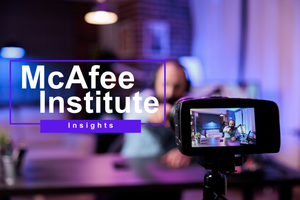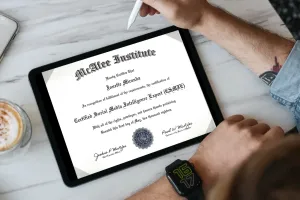Why Lie Detection Training is Critical for Modern Professionals
Lie detection training is specialized instruction that teaches professionals to identify deception through behavioral, verbal, and physiological cues. As an investigator or security professional, you face a stark reality: people lie constantly, and your current ability to catch them is probably terrible.
Key components of effective lie detection training:
- Microexpression analysis - Reading brief facial expressions that reveal true emotions
- Behavioral baseline establishment - Learning normal vs. deceptive body language patterns
- Verbal cue recognition - Detecting speech patterns and word choices that indicate deception
- Cognitive interview techniques - Using strategic questioning to elicit truthful responses
- Multi-channel assessment - Combining facial, body, and speech analysis for higher accuracy
The numbers are sobering. Research shows that people lie 2-3 times in every 10-minute conversation, and 91% of people regularly lie at home and work. Meanwhile, most professionals can only detect deception with about 54% accuracy, barely better than flipping a coin.
But proper training works. Studies demonstrate that comprehensive workshops can boost professionals' lie detection accuracy from 46.4% to 80.9%. Even brief 3-hour training sessions can improve accuracy to 60.7%.
For law enforcement and intelligence professionals, this training gap represents a critical vulnerability. Your ability to separate truth from lies directly impacts mission success and public safety.

Lie Detection Training 101: Objectives & Audiences
Lie detection training upgrades your human radar system from basic equipment that catches deception like a coin flip to precision instruments that spot lies with remarkable accuracy.
The main goal is building behavioral baselines - learning how someone normally acts when comfortable and truthful. Once you know their normal patterns, spotting deviations becomes much easier.
Modern training programs focus on three core skills:
Building razor-sharp observation skills rewires your attention to catch subtle signals that normally slip past unnoticed.
Developing multi-channel analysis teaches you to track facial expressions, body language, and speech patterns simultaneously - like having three security cameras instead of one.
Reducing dangerous overconfidence keeps you appropriately skeptical and helps avoid bias traps that fool even experienced professionals.
The Science Behind Effective Lie Detection Training
Dr. Paul Ekman's research identified seven universal emotions that leak through microexpressions - flashing across faces in just 1/25th of a second, too fast to fake or control.
Comprehensive training studies show measurable improvements even from short workshops. Participants jumped from chance-level accuracy (51.2%) to significantly better performance (60.7%) after just three hours.
Full-day programs deliver dramatic results. One landmark study tracked professionals through intensive workshops, with accuracy nearly doubling from 46.4% to 80.9%.
The secret ingredient is scientific backing - programs built on peer-reviewed research consistently outperform those based on myths or folklore.
Professionals Who Need Lie Detection Training
Law enforcement and intelligence professionals top the list. Over 38,000 officers have completed programs through institutions like the Behavior Analysis Training Institute.
HR professionals and hiring managers face deception with 78% of job seekers lying on resumes or during interviews.
Legal professionals regularly assess witness credibility and defendant truthfulness. Specialized investigations skills become increasingly valuable.
Healthcare providers deal with life-and-death deception when patients lie about symptoms or medication compliance.
Business leaders and negotiators gain competitive advantages by identifying false claims and assessing partner reliability.
Security personnel use these skills daily to identify potential threats and unauthorized access attempts.
Core Methods & Tools: From Microexpressions to Polygraphs

Modern lie detection training combines microexpression analysis with sophisticated behavioral assessment techniques and cognitive interview methods. The multi-layered approach works because while someone might control their words, they're less likely to simultaneously manage facial expressions, body language, and speech patterns.
Microexpression & Facial Analysis
Dr. Ekman's research revealed that microexpressions flash across faces in 1/25th of a second - faster than most people can detect. Training centers on Ekman's seven universal emotions: fear, anger, disgust, contempt, happiness, sadness, and surprise.

Training progresses through timed drills from still photos to video clips to real-time interactions. Advanced training covers masked expressions where fake emotions overlay genuine ones, and squelched expressions when people start showing true feelings but quickly suppress them.
Body Language & Behavioral Cues
Quality training teaches clusters of behaviors rather than isolated gestures. Establishing baseline behavior comes first - everyone has their own normal movement patterns.
Posture shifts and positioning changes often signal psychological discomfort. Illustrators (hand movements accompanying speech) tend to decrease when people lie due to cognitive effort. Adaptors like face touching can increase under stress.
The key insight is understanding timing and synchronization - natural communication shows harmony between words and movements that deception can disrupt.
Instrument-Based Approaches
Polygraph training remains the gold standard for instrument-based detection, measuring heart rate, breathing, and skin conductance. APA-accredited programs require months of coursework and supervised practice.
Voice stress analysis represents a newer approach detecting deception through vocal patterns. However, the Employee Polygraph Protection Act severely restricts workplace polygraph use, and results face admissibility challenges in court.
Cognitive & Verbal Techniques
Cognitive techniques actively make lying more difficult by exploiting the mental effort required to maintain deception. The cognitive interview framework uses strategic questioning to elicit detailed information while challenging fabricated stories.
The PREP framework provides systematic approach: Preparation, Rapport building, Elicitation, and Persuasion techniques. Statement analysis examines content structure - truthful statements typically contain more sensory details and specific timeframes.
For professionals developing advanced skills, self-study approaches to investigations provide valuable supplementary learning.
Comparing Training Formats & What the Data Says
The effectiveness of lie detection training varies significantly based on format and duration. Research provides clear guidance on which approaches produce the best outcomes.
| Training Format | Duration | Accuracy Improvement | Cost Range | Certification |
|---|---|---|---|---|
| Brief Workshop | 3 hours | 51.2% → 60.7% | $200-500 | Certificate of completion |
| Full-Day Intensive | 8 hours | 46.4% → 80.9% | $500-1,500 | Professional certification |
| Online Self-Paced | 20+ hours | Variable | $119-299 | Course certification |
| Multi-Day Program | 40 hours | Highest retention | $575+ | Professional credentials |
Brief workshops show measurable improvements but limited retention. Full-day programs deliver dramatic accuracy improvements. Online programs offer flexibility but require strong self-discipline.
Online vs In-Person Lie Detection Training

Online programs offer flexibility and cost-effectiveness (50-70% less than in-person), with repeatability for reviewing content. However, they lack live feedback, reduced interaction, and require strong self-discipline.
The most effective online programs incorporate live video sessions and interactive components rather than just video lectures.
Brief Workshops vs Comprehensive Programs
Studies on high-stakes training show clear differences:
Three-Hour Workshops improve accuracy from 51.2% to 60.7%, are cost-effective for large groups, but show limited retention without follow-up.
Full-Day Programs deliver dramatic improvements (46.4% to 80.9%), include hands-on practice, and provide certification.
Multi-Day Programs show highest skill retention and real-world transfer, though most expensive.
Certification, Time & Cost Snapshot
Popular Programs: - Dr. Ekman's Tools: $119-299, used by 50,000+ customers - BATI: $575 for 40-hour course, 38,000+ graduates - Science of People: 20+ hours, 30,000+ students - Pamela Meyer's Masterclass: 11 modules with professional certification
Certification Bodies include American Polygraph Association, International Association of Interviewers, and California POST certification.
Most professionals find 20-40 hours of initial training plus regular practice provides optimal skill development.
Limitations, Ethics & Legal Landmines

Lie detection training has significant limitations. Cultural differences can completely throw off assessments - what looks deceptive in one culture might be normal in another. Individual differences from anxiety, medical conditions, or personality disorders can make honest people appear deceptive.
Context matters enormously. High-stress situations change behavior patterns. There's also a base rate issue - even with 80% accuracy, you'll get more false positives than true positives when testing mostly honest populations.
Avoiding Bias and Overconfidence
Studies on bias effects show training often increases confidence without improving accuracy - a dangerous combination.
Most people start with truth bias (assuming honesty) but poor training creates deception bias (seeing lies everywhere). Confirmation bias makes you seek evidence confirming suspicions while ignoring contradictory signals.
Best practices include looking for truthfulness indicators alongside deception cues, requiring multiple assessments for important decisions, and using structured protocols rather than gut feelings.
Workplace and Legal Compliance
The Employee Polygraph Protection Act prohibits workplace polygraph use for most private employers. EEOC rules create discrimination risks if methods disproportionately affect protected groups.
For government agencies, constitutional protections limit unreasonable searches and compelled self-incrimination. State laws vary widely on employer restrictions and practitioner licensing requirements.
Professional organizations maintain strict ethical codes requiring informed consent, proper certification, honest representation of limitations, and confidentiality protection. The APA Ethics & Grievance Complaint Form provides violation reporting mechanisms.
Before workplace implementation: get legal counsel, ensure proper practitioner certification, develop clear policies, be transparent about limitations, and create appeals processes.
Best Practices to Implement & Keep Skills Sharp

Maintaining lie detection training skills requires consistent practice and systematic improvement. The most successful professionals treat it as a craft needing constant attention.
Multi-channel practice works on facial expressions, body language, and verbal cues simultaneously. Deliberate practice means working on challenging scenarios with known outcomes for feedback. Simulation exercises bridge classroom knowledge to real applications through role-playing and mock interviews.
Building a Sustainable Lie Detection Training Program
Curriculum design should progress from basic concepts to advanced applications, starting with baseline establishment before complex analysis. Address cultural sensitivity throughout, not as an afterthought.
Legal and ethical considerations must be woven throughout the program. Practitioner-led instruction often proves more effective than purely academic approaches, bringing real-world credibility.
Data-driven evaluation requires pre- and post-training assessments using standardized scenarios, tracking accuracy at 3, 6, and 12-month intervals. Build comprehensive resource libraries with video databases, case studies, and mobile apps for ongoing practice.
Continuing Education & Daily Habits
Successful practitioners develop specific habits: daily practice routines with microexpression apps, video analysis of recorded interviews, and self-assessment by recording and analyzing your own behavior patterns.
Seek specialized workshops beyond basic training, attend professional conferences, and join study groups for peer learning. For broader expertise, understanding criminal profiling requirements provides valuable context.
Technology integration includes analysis software, mobile applications, and staying informed about AI tools that supplement human judgment. The goal is consistent improvement and reliable application of evidence-based techniques.
Frequently Asked Questions about Lie Detection Training
Does lie detection training really improve accuracy?
Absolutely! The research is pretty clear on this one. Lie detection training that's based on solid science can dramatically boost your accuracy. We're talking about jumping from coin-flip levels (around 54%) all the way up to 80.9% for those high-stakes emotional situations where people really don't want to get caught.
Even if you only have time for a quick 3-hour workshop, you'll still see improvement - from about 51% to 61% accuracy. That might not sound like much, but when you're making decisions that affect people's careers or safety, every percentage point matters.
The catch? Not all training is created equal. Programs that rely on peer-reviewed research and validated techniques consistently outperform those based on old wives' tales about body language. The best training combines facial analysis, behavioral observation, and verbal assessment rather than focusing on just one area.
Here's something important though - training often makes people more confident in their judgments, which can be dangerous if their accuracy hasn't actually improved. Quality programs address this head-on and teach you to stay humble about what you can and can't detect.
The key ingredients for effective training include evidence-based curriculum, hands-on practice with immediate feedback, and ongoing skill maintenance. Without these elements, you might feel more confident but not actually be any better at spotting deception.
How long does it take to get certified?
The timeline really depends on what level you're aiming for and how deep you want to go with lie detection training.
If you're looking for basic certification, you could be done in a few weeks to a couple months. Online microexpression courses take anywhere from 3 to 20 hours of study time. Weekend workshops can get you a certificate in just a day or two. Basic interview technique programs typically run 8 to 40 hours.
For professional-level certification, plan on 3 to 12 months. Comprehensive lie detection programs involve 40 to 100 hours of instruction plus plenty of practice time. Behavioral analysis certification takes several months of study and supervised practice. Advanced interview and interrogation programs are multi-month commitments with ongoing assessment.
Specialized certifications are a whole different ballgame - we're talking 6 months to 2 years. Polygraph examiner certification requires 6 to 12 months including supervised internship work. Forensic interview specialists need extensive training and supervised practice. If you want to qualify as an expert witness, you're looking at years of experience plus advanced credentials.
Most professionals find that achieving basic competency takes about 20 to 40 hours of initial training, followed by 6 to 12 months of regular practice and real-world application. True expertise? That typically develops over several years of consistent use and ongoing education.
The time investment reflects just how complex and important this work is. When your assessments can significantly impact people's lives and careers, you want to make sure you really know what you're doing.
Is lie detection training ethical and legal to use at work?
This is where things get complicated fast. The short answer is: it depends on where you work, what industry you're in, which techniques you use, and how you apply the information.
Legal considerations are all over the map. The Employee Polygraph Protection Act puts severe restrictions on polygraph use by private employers - most companies simply can't require these tests. Many states have additional restrictions on lie detection techniques. If you're in hiring, you need to worry about EEOC compliance and making sure you're not discriminating against protected classes. Government employers face even more complex constitutional issues.
From an ethical standpoint, there are some non-negotiables. People need to know what techniques you're using - no secret behavioral analysis. Only properly trained and certified individuals should be making these assessments. You must understand and communicate the limitations of whatever techniques you're using. Results need to be kept confidential and used only for legitimate business purposes.
Here's what works best in workplace settings: focus on improving communication and interview skills rather than trying to "catch" people lying. Use these techniques to build better dialogue and understanding, not to play gotcha games. Be transparent about your methods and their limitations. Have appeals processes for any decisions based on behavioral assessments.
The most successful workplace applications treat lie detection training as a way to improve communication rather than as a lie detector. When you use these skills to improve rapport, ask better questions, and really listen to responses, everyone benefits. The goal should be getting to the truth through better conversation, not catching people in deceptions.
Before implementing any program, definitely get legal counsel involved. The rules vary so much by location and industry that what's perfectly legal in one place might get you in serious trouble somewhere else.
Conclusion & Next Steps
Lie detection training is a game-changer for professionals whose work depends on separating truth from deception. When people lie 2-3 times every 10 minutes, your natural 54% accuracy can jump to 80%+ with proper training.
The path requires quality instruction based on real science, consistent practice with feedback, and ongoing skill development. Choose training carefully - look for curricula grounded in peer-reviewed research taught by experienced practitioners.
Understanding legal boundaries isn't optional. The Employee Polygraph Protection Act, EEOC guidelines, and professional ethics codes are essential for responsible practice. Plan for regular refresher training and peer learning opportunities.
At McAfee Institute, we've watched thousands of professionals transform their investigative capabilities through evidence-based training. Our programs build critical thinking skills and ethical frameworks needed for real-world application.
Whether investigating complex cases, making hiring decisions, or assessing threats, accurate veracity assessment gives you a significant professional edge. The question is simple: can you afford to continue with chance-level deception detection skills?
For professionals ready to master these critical skills, explore our gold-standard training programs designed for today's security and intelligence professionals.
The lies aren't going to stop coming. But with proper training, you'll finally be ready for them.







Member discussion